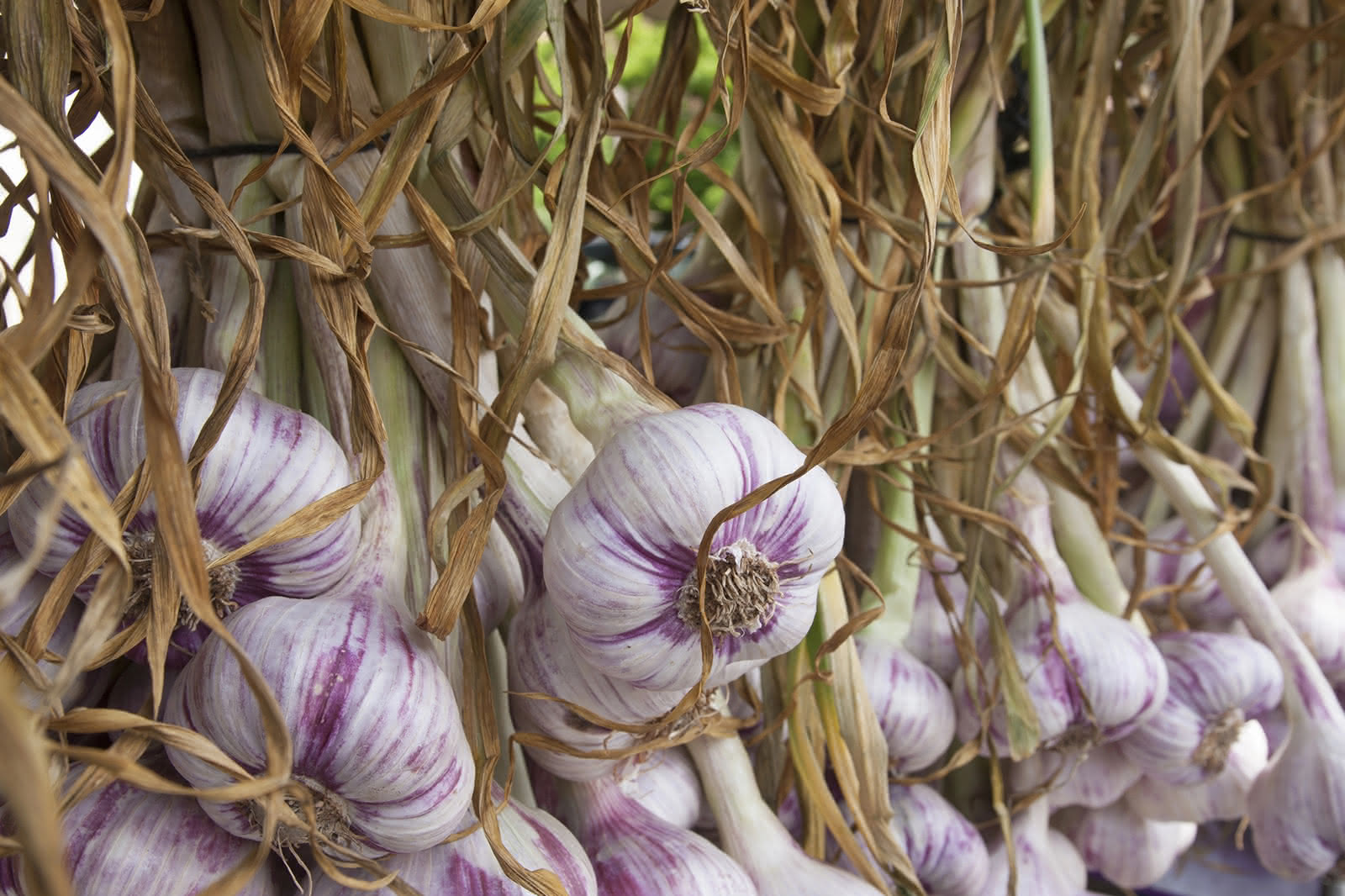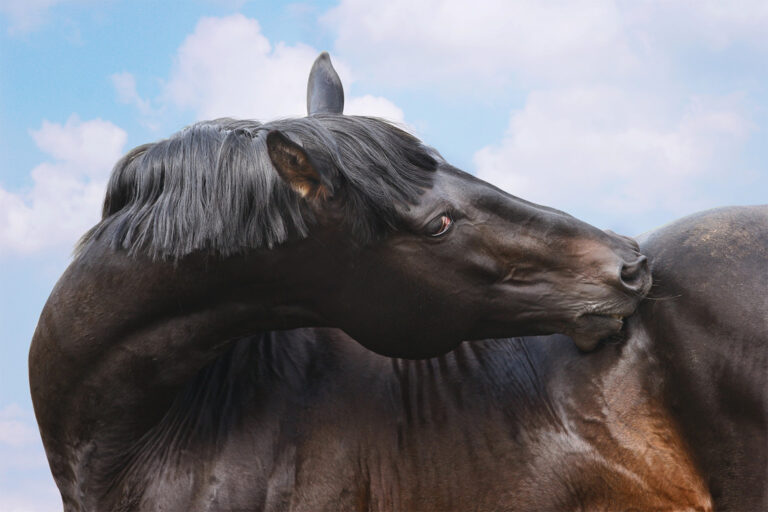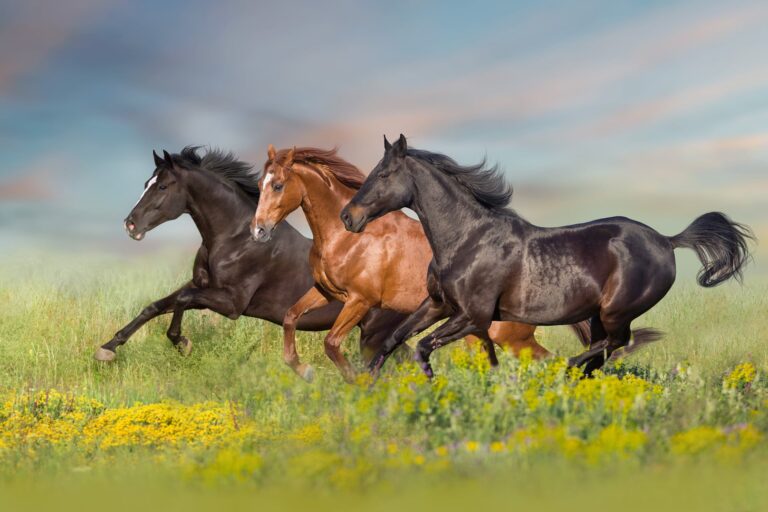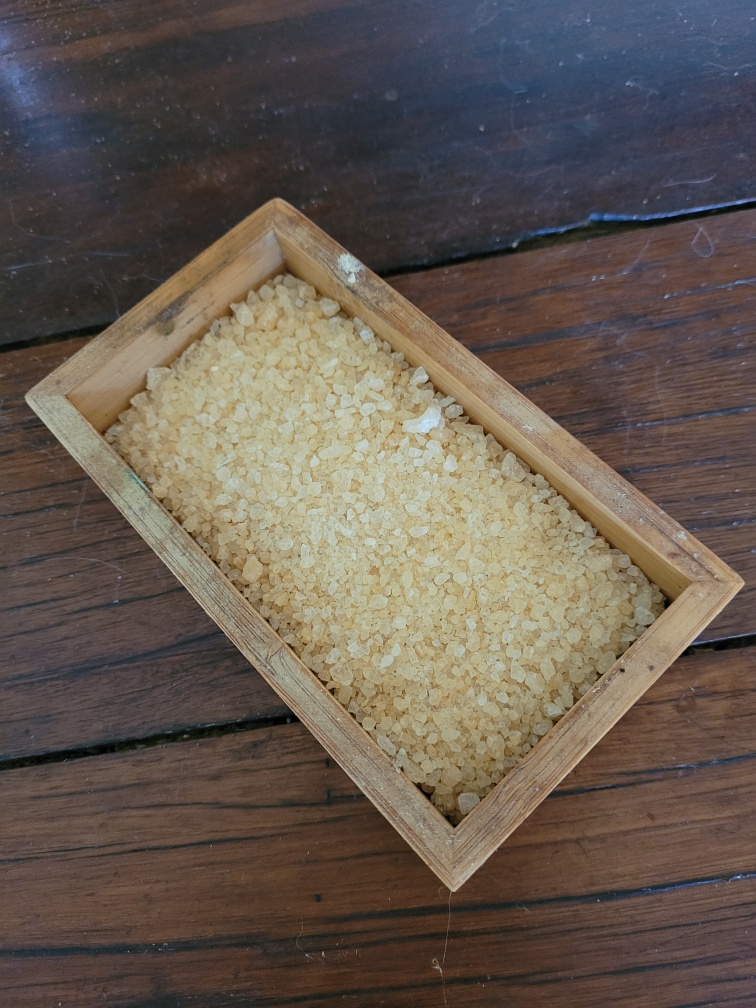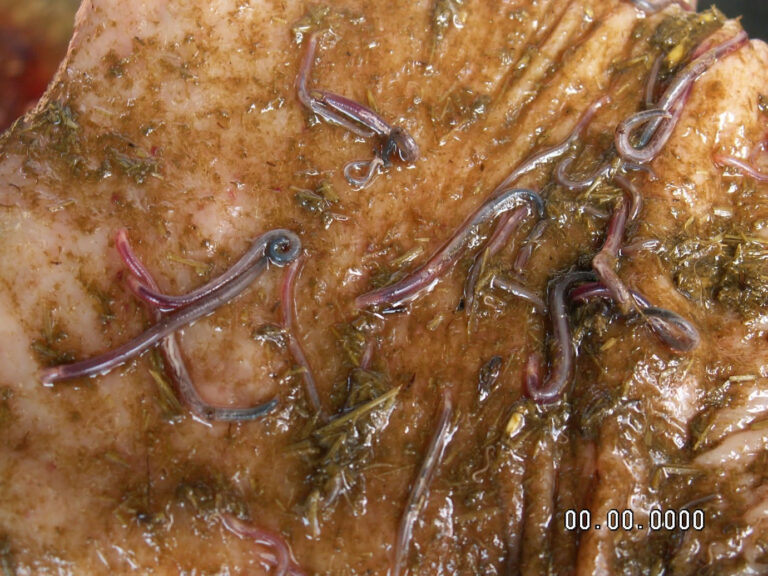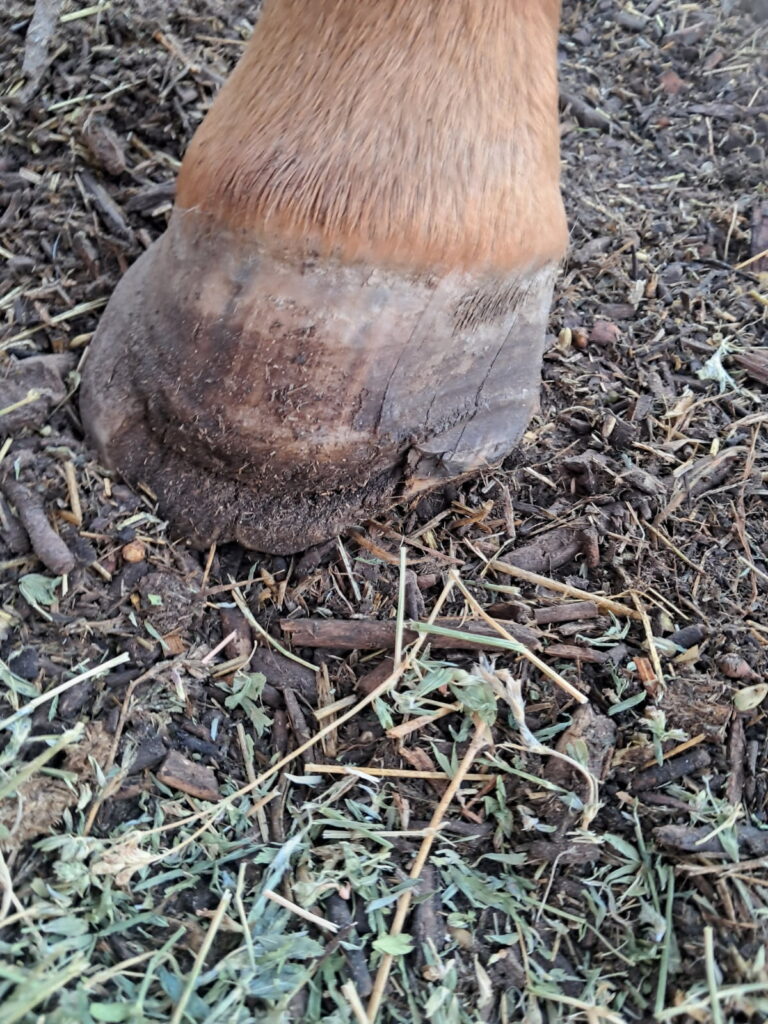The Facts About Garlic For Horses
Garlic has been used as a food and a medicine for humans for over six centuries and is now in widespread use as a feed supplement for horses all over the world.
I have fed Garlic to my own horses for more than 15 years, and for the past 10 years have recommended it to my clients as an essential prophylactic feed supplement and employed it on countless occasions as a supreme alterative and antiseptic herb for curing infections.
Garlic’s latin name is Allium sativum and is a member of the onion (Alliaceae) family. There are about 150 native species throughout the world and all the wild alliums share many chemical and biological activities with the more famous Garlic.
The grandmother of herbal medicine Juliette de Bairacli Levy says in her book “The Complete Herbal Handbook for Farm and Stable”that Garlic is worshipped by the gypsies who uphold that it possesses magic properties on account of its being able to cure the majority of ailments which afflict man and the animals he has domesticated. Horses enjoy eating wild Garlic if they get the opportunity.
The noted British equine herbalist Hilary Page Self outlines the major uses for horses in her book “A Modern Horse Herbal”. She states that Garlic is ideal for any respiratory disorder, being both expectorant and antibiotic, is one of the best herbs to protect animals or humans from infection, is supportive to the development of natural bacterial flora, so vital to a good digestive system, whilst killing pathogens, and externally can be used on bites, stings, ringworm, lice and tick bites.
The famous American ethnobotanist Dr James Duke PhD has spent 30 years researching plants for the U S Department of Agriculture and is one of the world’s most respected authorities on medicinal plants. Over the years, he has roamed the jungles of Central and South America, learning from folk healers and collaborating with the National Cancer Institute to identify plants that could prevent or treat cancer and other diseases.
Traditional Uses Confirmed by Science
That such an eminent authority states that he has found numerous correlations between traditional uses over the centuries and modern scientific research is a superb accolade for this versatile herb.
According to Duke, Garlic is an immune system booster, liver protective, anti-allergy, anti-asthma, anti-bronchitis, anti-cancer, cancer preventative, anti-fungal, anti-viral, anti-bacterial, anti-oxidant, treats ulcers, yeast infections and sinusitis and is an important heart herb.
Duke states “It never ceases to amaze me that there is almost always a chemical or suite of chemicals in a plant that explains why it is used for it popular indications. Few herbs have more folklore attached to them than Garlic, and few herbs have more phytochemicals that can give reason to the folklore.” He continues “All in all, the roster of Garlic’s biologically active compounds reads like a pharmacist’s shelf – approximately 70 compounds have been identified so far. When I tabulated the effectiveness of Garlic for my database, I found clinical proof, or scientific experiments using humans, that Garlic is indeed effective for heart problems, especially for lowering high blood pressure and cholesterol levels …. I also found other good, strong evidence for Garlic’s activity as an antibiotic and for the treatment of burns, cancer prevention, strengthening the immune system, and respiratory problems. I found less conclusive, but very suggestive evidence that Garlic is helpful for arthritis, intestinal disorders and parasites, lead poisoning, tuberculosis and typhus.”
Duke’s praise of Garlic, he takes it himself every day, includes the facts that it is both germicidal and immune boosting, that it is better than penicillin because it contains at least 25 germ-killing compounds compared with penicillin’s one type of active ingredient, and that resistance will be less likely because the germs are being attacked on several fronts.
Garlic’s Components
Garlic is very rich in the minerals Sulphur and Selenium which are not coincidentally metabolic partners. Sulphur is well known as a blood cleansing mineral that is useful in preventing and treating disease used both internally and externally. Many areas of Australia are deficient in Selenium so feeding Garlic is an easy way to supplement this element necessary for muscular health and fertility and which is also a significant anti-oxidant.
The list of bacteria sensitive to Garlic is extraordinary and includes Staphylococcus, Streptococcus, Brucella, Bacillus, Vibrio, Klebsiella, Escherichia and Salmonella.


Wild Garlic
Detractors
Bad press on feeding Garlic to horses periodically surfaces. So I am pleased to clarify this misinterpretation. Detractors of the practice claim that Garlic can cause haemolytic anaemia, a disease affecting the red blood cells. In 2004, Wendy Pearson M.Sc. (Agr.) a researcher at the University of Guelph, Ontario, Canada, conducted a trial using four horses to see if this was true. Two horses received the garlic as a top dressing in their feed, the others were fed a garlic-free diet. The daily amounts of freeze-dried garlic were increased to a maximum of five cups (700 grams!!!) per day over a 71 day period. She found that the garlic eaters showed changes in their blood chemistry beginning at around the third week, when garlic intake was four cups (560 grams) of freeze dried garlic per day. Their red blood cell count fell and the red cells developed Heinz bodies, deformations in the cells caused by denatured haemoglobin. That finding warranted termination of the study.
Although she found that large amounts of voluntarily eaten Garlic negatively affected horses, Pearson says that owners and trainers are currently supplementing horse feeds with less than one-tenth of the maximum amount of garlic administered to the research horses. This is a maximum of 70 grams.
There is minimal risk of toxicity at these amounts, Pearson says, and contrary to an earlier claim that just five grams of garlic a day could be toxic, she estimates a horse would have to eat more than 100 times that amount before experiencing ill effects.
I have communicated with Wendy Pearson about the trial and I have read the entire transcript of it which she provided to me. I was interested to learn that the horses fed Garlic had it mixed with strong molasses before it was added to the feed. I had queried the likelihood that any horse would eat such a huge amount of Garlic, especially as some horses will not eat it at all, as was fed in the trial and this was the answer I received and Wendy Pearson agreed with me that it was hard to get them to eat it without the molasses.
It’s all About Quality
The most common way of feeding Garlic to horses in Australia is in the freeze-dried granule form or powder form. All of this Garlic is imported from China and is bleached, yes even the Organic, also from China.
I DO NOT RECOMMEND FEEDING THIS FORM OF GARLIC!
The very best way to feed Garlic to horses is to feed raw Garlic, grown in Australia, organic is even better. There are lots of specialist Garlic growers in many parts of Australia these days or you can even grow it yourself. Spring is Garlic harvest time, so stock up the and dehydrate or freeze dry some for the winter months.
However you do need to freshly crush the Garlic before feeding to ensure the important component Allicin is bio-available. There are lots of handy gadgets available to make this easy.
Do not feed Garlic which you buy in the supermarket as the shelf life of the corms is very limited and given that most of this Garlic is already old before it reaches the supermarket shelves, it is a waste of money. Do not feed minced Garlic or Garlic Oil either as once again the health giving properties have long been processed out of these products. Garlic infused vinegar is not a good way to feed Garlic as one cannot be sure of the dosage rate and if you need to feed higher amounts of vinegar at any time, then you will be increasing the amount of the Garlic which you may not be appropriate. Also the quality of the Garlic used cannot be guaranteed and the Allicin content is gone.
Feeding Rates
I recommend 30 grams per day for an average sized horse (450 kgs). This can be reduced commensurately for smaller horses down to 10 grams and increased for larger horses, up to 50 grams. A few times a week is sufficient. These amounts can be doubled for short periods of time (for a few weeks and fed daily) when any kind of infection threatens. This includes coughs, colds, viruses and strangles. To reduce the incidence of tick, mite, fly and midge bites, Garlic can be fed at up to double the rate above during the season. Don’t forget raw Garlic is approximately 40% water.
Routine feeding of Garlic is effective in deterring some species of worms, namely roundworms, pinworms, tapeworms and hookworms, but not large or small strongyles.
Cautions
Some horses will not eat Garlic at all, usually the imported granules or powder discussed above. When introducing Garlic to the diet, like any new feed, do so a little at a time, and gradually build to the correct feeding rate, it is an acquired taste for some horses, while others take to it immediately.
Horse herbal books advise withdrawing Garlic from the diet of mares who are due to foal, as the Garlic can taint the taste of the milk and may discourage suckling. However I have found that leaving Garlic in the diet of broodmares is a big bonus, a total absence of foal scours, which has also been the experience of my clients.
To quote James Duke “To say ‘Garlic is the Greatest’ is no herbal hyperbole”.
